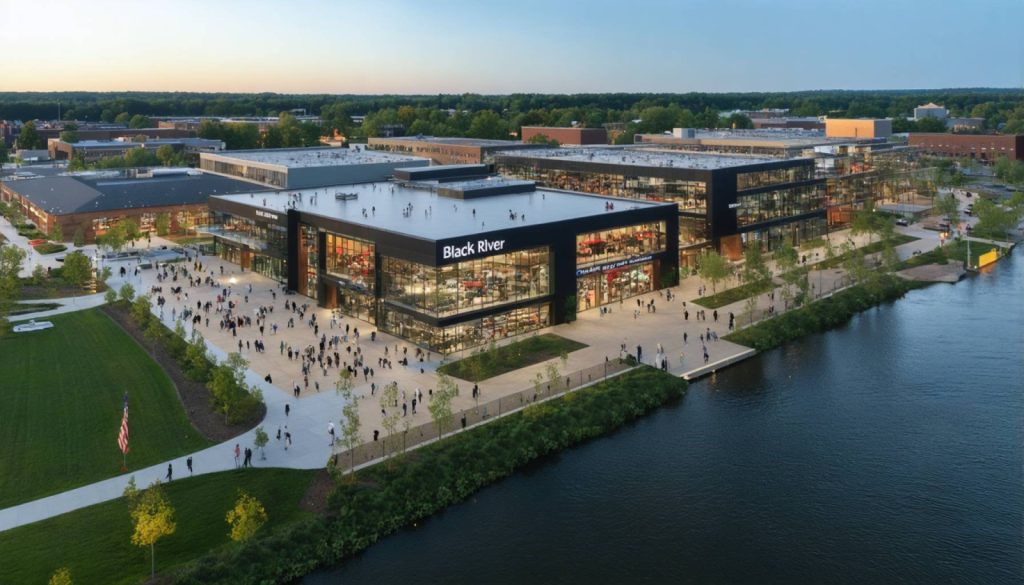
- BRIC leads a $7.2 million renovation of Springfield’s historic Park Street schoolhouse, transforming it into an innovation hub for entrepreneurs.
- The project integrates business incubation, housing, and community engagement while modernizing the facility to include asbestos removal, updated systems, and ADA compliance.
- The renovation includes converting the gymnasium and theater to support tech enterprises and enhance creative innovation.
- BRIC promotes local innovation with expanded STEAM programs for youth and professional development for educators.
- The Actuator curriculum and Google collaboration foster tech talent, offering courses in software development, e-marketing, and data analytics.
- BRIC’s initiatives, supported by Vermont Technical College and Green Mountain Economic Development Corp., cultivate a thriving entrepreneurial ecosystem.
Against the backdrop of Springfield’s historic Park Street schoolhouse, a new chapter of innovation and community building unfolds as the nonprofit Black River Innovation Campus (BRIC) spearheads a $7.2 million renovation. The ambitious transformation repurposes the school into a dynamic hub for entrepreneurs, integrating business incubation, housing, and community engagement. Imagine its late 19th-century architecture receiving a modern facelift while preserving the soul of a bygone era — a perfect metaphor for the convergence of history and innovation.
Crafting an Entrepreneurial Haven
With visionary fervor, BRIC breathes new life into the venerable halls, determined to turn them into a blank canvas for tech-driven enterprises. Plans to refurbish the gymnasium and restore the 500-seat theater transform this relic into a stage for both dreams and practical innovation. The acoustics alone promise to amplify voices as they reverberate through the historic expanse, ushering in a vibrant era of creative enterprise.
The painstaking renovation also tackles essential modernizations: asbestos removal, updated electrical systems, and ADA-compliant entrances, aiming for a comprehensive, welcoming space. At the core of this revival lies powerful potential — 23 market-rate apartments for entrepreneurs, designed not only as residences but as incubators nurturing entrepreneurial spirit.
Empowering Tomorrow’s Innovators
Rooted in the ethos of equipping the next generation, BRIC’s expanded STEAM programs plant seeds of curiosity and expertise among local youth. From after-school courses to summer camps, these initiatives embrace the vibrant intersection of science, technology, engineering, arts, math, and manufacturing. The community’s keystone — its children — embarks on a journey fueled by innovation, while local educators enhance their toolkit through professional development.
Over 60 lucky youngsters transformed their summer with BRIC’s camp offerings, leaving the community eager for more. By doubling the number of camps this year, BRIC reaffirms its commitment to providing golden opportunities wrapped in engaging, interactive experiences.
Nurturing Tech Talent and Collaboration
BRIC’s Actuator curriculum stands as a beacon for aspiring entrepreneurs eager to break new ground in technology. The eight-week course builds bridges from imagination to execution, weaving threads of knowledge through software development, game creation, and more. Cohorts from across the Northeast and beyond converge in Vermont, drawn by its rich tapestry of business community support and commitment to social impact.
Moreover, BRIC’s strategic partnership with Google creates pathways for adults to refine digital skills across e-marketing, data analytics, and other vital tech domains. This transformative agenda nurtures a workforce poised to tackle tomorrow’s challenges with creativity and resilience.
A Community United in Vision
As BRIC’s Cultivator initiative takes root across Vermont, its seeds of innovation reach into Randolph, blending the ambition of local entrepreneurs with BRIC’s robust framework. With support from Vermont Technical College and the Green Mountain Economic Development Corp., the program molds the contours of a thriving entrepreneurial ecosystem, even in places long accustomed to reliance on tradition.
The takeaway from BRIC’s spirited metamorphosis is clear: In a world hungry for innovation, the communities that flourish are those that nurture, empower, and provide a stage for ambition. With its distinctive blend of historic charm and forward-thinking dynamism, the Springfield schoolhouse epitomizes how revitalized spaces and visionary initiatives can forge economic growth, ensuring that the promise of entrepreneurship remains accessible to all who dare to dream.
Transforming Historic Spaces: The Inspiring Journey of BRIC’s $7.2 Million Revamp
The Black River Innovation Campus: A Beacon for Entrepreneurs
The Black River Innovation Campus (BRIC) is turning Springfield’s historical Park Street schoolhouse into a modern epicenter for innovation and community development. With a $7.2 million investment, the renovation will integrate business incubation, housing, and community engagement, preserving the building’s historic charm while pioneering a new facade of entrepreneurial growth.
Reviving a Historic Landmark
By undertaking essential modernizations — asbestos removal, advanced electrical systems, and ADA-compliant upgrades — BRIC ensures that the Park Street schoolhouse becomes not only a functional space but also a welcoming one for people with different abilities.
Key Features and Renovation Highlights
– Gymnasium and Theater Restoration: A 500-seat theater and gymnasium will host events and activities that connect the community and entrepreneurs, spotlighting the convergence of culture and commerce.
– Residential and Incubation Space: The project includes 23 market-rate apartments. These spaces are specifically designed for entrepreneurs, offering a unique environment that fosters creativity and innovation.
Empowering the Next Generation Through STEAM
BRIC doesn’t just cater to existing entrepreneurs; it also invests in future innovators. Their expanded STEAM (Science, Technology, Engineering, Arts, Math, and Manufacturing) programs cultivate creativity and technical skills among local youth.
Educational Initiatives Include:
– After-School Courses and Summer Camps: BRIC’s initiatives engage students in a dynamic learning process. More than 60 campers are expected to benefit, with programs doubling in size to meet demand.
– Professional Development for Educators: Local teachers receive tools and training to carry innovation into classrooms, bolstering community educational standards.
Building Bridges to Tech Careers: BRIC’s Actuator Curriculum
The BRIC Actuator curriculum connects aspiring entrepreneurs with real-world tech applications. The intensive eight-week course covers software development, game creation, and more, providing necessary skills for a modern tech career.
Leveraging Strategic Partnerships
BRIC’s collaborations extend to tech giants like Google, offering adult learners pathways to hone digital skills in e-marketing, data analytics, and other critical areas. This ensures a workforce that’s prepared to meet tomorrow’s tech demands.
Assessing the Impact: Market Forecasts & Industry Trends
As a model of adaptive reuse, BRIC not only preserves historical architecture but aligns with trends favoring tech innovation hubs in non-metropolitan areas. This speaks to a broader movement towards decentralized innovation, a shift that’s gaining traction as more professionals seek flexible work environments.
Pros and Cons Overview
Pros
– Cultural and Economic Revitalization: Preserves historical architecture while boosting local business and culture.
– Comprehensive Support for Entrepreneurs: Offers living spaces, education, and business incubation.
– Community Engagement: Enhances local educational and professional offerings, ensuring relevance and inclusivity.
Cons
– High Initial Investment: The $7.2 million renovation requires substantial capital.
– Potential Overreach: Balancing historic preservation and modern upgrades may be complex and expensive.
Actionable Recommendations
– Community Involvement: Engage with projects like BRIC by volunteering or participating in local programs to understand these innovations directly.
– Stay Informed: Entrepreneurs and educators should seek opportunities to collaborate with such hubs to remain at the forefront of tech integration.
– Policy Advocacy: Support policies that back similar revitalization and tech education initiatives in other regions.
For more information about innovative community development, visit the Black River Innovation Campus (BRIC) website. Here, you can discover opportunities for involvement, learn about ongoing projects, and explore how these initiatives are transforming Springfield and beyond.



